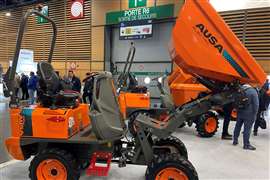Market view from Morrow
09 September 2017

Tower crane sales and rental operation, Morrow, said it has invested heavily in new cranes over the last few years. Particularly it has invested in a number of large luffing boom cranes – with the Liebherr 710HC-L being the largest with a lifting capacity of 141,000 pounds (18,597 kg) and a hook reach of 213 feet (65 metres).
Morrow said it believes the market for luffing boom cranes will grow as construction increases in urban areas where hammerhead cranes cannot operate due to existing structures or air rights issues. “More contractors are seeing the advantages of using tower cranes in tight industrial areas, due to their small footprint and long coverage area,” commented Peter Juhren, Morrow vice president of operations. “We have also seen a growing market for our new Liebherr 172EC-B flat top crane, with a maximum lifting capacity of 17,640 pounds (8,001 kg) and a maximum hook reach of 197 feet (60 m), and our new Liebherr 81K.1 self-erecting tower crane with a maximum capacity of 13,230 pounds (6,001 kg) and a maximum hook reach of 153 feet (47 m).”
Morrow said the commercial and residential markets for tower cranes are still very strong in the USA, but it has also seen a growing demand for the application of tower cranes in the industrial market. “We have had very successful projects building a brewery in Mexico and an LNG plant in Baton Rouge, LA,” Juhren continued. “More and more contractors see the advantages of using tower cranes in tight industrial areas, with the small footprint and long coverage area they provide. Usually the industrial market requires cranes in the 500 tonne-metre range and above due to the heavy lift requirements of most industrial projects.”
Tower cranes are much more economical to use than other types of crane, Morrow concluded. “Most are electric, which is more efficient than diesel powered, not to mention they are environmentally friendly with no emissions or fumes,” Juhren said. “Tower cranes also have a small footprint and can cover much larger areas of a project than conventional cranes. More and more tower cranes are being manufactured with very modern PLC controls and frequency drive systems which can be up to 70 % more efficient than older relay-controlled slip ring motor cranes. These operating cost benefits are substantial to a project’s bottom line.”






